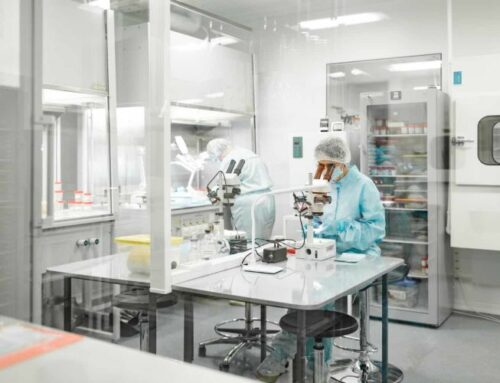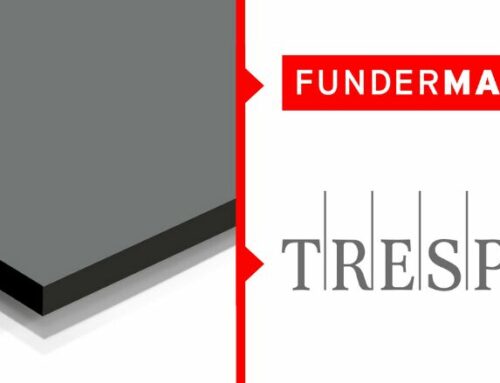Choosing the Right Science Lab Countertops
One of the significant decisions to make when designing or renovating a lab is choosing the countertops. For longevity, science labs countertops need to be durable, with high resistance to chemicals, heat, water and microbes. Additional requirements depend on the type of environment and work that will take place.
When choosing countertops, it is crucial to consider the material used and varying attributes, including functionality, durability, and aesthetics. Selecting the wrong countertop can reduce longevity and prevent certain types of work from being conducted.
What are science lab countertops?
The phrase “science lab countertops” can represent either work surfaces or laboratory applications.
Lab countertops is the surface where tests, experiments and work is carried out. Like the name suggests, science lab countertops are used in lab settings. There are a number of different materials available depending on the function of the lab.
Countertops are available in a wide range of materials, compositions, costs, colors, edges, and finishes. Each application is unique. Therefore, the ideal countertop for your science lab depends on the type of environment and the work involved.
The most commonly used countertop materials include epoxy resin, phenolic resin, polypropylene, stainless steel, chemical resistant laminate, and high-pressure plastic laminate. Before selecting a material, it is important to understand the unique advantages and disadvantages of each.
Types of science lab countertops
Based on the type of material used, the most common types of lab countertops include:
Epoxy resin countertops
Epoxy resin countertops contain a mixture. This includes resin, silica, a hardener, and fillers. The materials are molded and oven cured as a solid, continuous product. They hold up well in harsh environments where moisture and heat are used.
Their physical and chemical resistance also makes them ideal for heavy-duty. They are available in a standard black finish, with customizations available upon request.
| Application | Ideal for most extreme lab conditions, including labs that perform heavy industrial and chemical testing, use harsh chemicals, open flames, and technology that create extreme heat |
| Commonly used in | Biological science labs, research and development labs, industrial testing facilities, medical labs, microbiology and biomedical, university labs, K-12 labs, hospitals, pharmaceutical labs, molecular pathology, applied science research labs, or any other labs including oil and spectrometry |
| Pros |
|
| Cons |
|
Phenolic Resin Countertops
Phenolic resin countertops are manufactured by saturating layers of natural kraft paper with phenolic resin. The layers are then processed under extreme heat. This forms solid surface composite panels. The core of phenolic resin countertops is black, but you can custom order colors.
Common brands include FunderMax and TRESPA, which each have their own unique properties.
| Application | Excellent choice for lab applications that require a chemical resistant, balanced, and cost-effective surface material. Also ideal for labs that work with acidic reagents, such as phosphoric or sulfuric acid. |
| Commonly used in | Biological, chemical, clinical, or analytics labs, sample processing labs, microbiology, research and development, water treatment facilities, radiology, photography labs, hematology, and urology labs |
| Pros |
|
| Cons |
|
Polypropylene countertops
Polypropylene is a thermoplastic polymer that provides a high chemical solvent, base, and acid resistance. Polypropylene countertops have a moderate-to-high level of moisture resistance. They are perfect for labs that commonly use corrosive materials.
| Application | Highly corrosive and chemical resistant laboratories |
| Commonly used in | Trace meta-analysis, metallurgy, clean room, pathology, blood science, acid production, food sciences, |
| Pros |
|
| Cons |
|
Stainless Steel Countertops
Stainless steel is low carbon steel made up of chromium and nickel. Stainless steel countertops give your lab a modern look and a beautiful aesthetics. They are available in #304 and heavier-duty #316 alloys.
| Application | Labs where results depend on non-contamination and require surfaces to handle high temperatures and constant cleaning. |
| Commonly used in | Carbon-based chemical labs, pharmaceutical labs, food testing, hospitals, clean rooms, biological science, medical, microbiology biomedical, and other chemical labs |
| Pros |
|
| Cons |
|
Chemical resistant laminate
Chemical resistant laminate is made from paper encased in chemicals. It is decorative and highly resistant to chemicals. It is best for dry applications and damages easily.
| Application | Labs where results depend on non-contamination and require work surfaces that are chemically resistant and easy to clean |
| Commonly used in | Beauty product labs, pathology, product testing, urology, dental, and photographic dark rooms |
| Pros |
|
| Cons |
|
High-pressure plastic laminate
High-pressure plastic laminate countertops are made manufactured from plastic laminate – a combination of wood fibers, phenolic resin, and melamine.
| Application | It is a general-purpose countertop, ideal for chemical-free and dry applications only. |
| Commonly used in | Product testing and technology labs. |
| Pros |
|
| Cons |
|
Wood countertops
Wood countertops are also known as butcher blocks. They are robust and suitable in physically demanding environments. They have a tough acrylic coating finishing that helps repel alcohol and other cleaning agents.
| Application | It is ideal for physical testing environments. |
| Commonly used in | Biological and food laboratories, robotics labs, industrial applications |
| Pros |
|
| Cons |
|
Factors to consider when choosing a lab countertop
There are many factors to consider when choosing the right countertop for your lab. The major ones include:
- The type of environment and work involved: These will determine your needs requirements regarding resistance required. For example, if you work in a high heat environment, you will need heat resistant countertops. If you work in a wet or dry lab, this will also determine the countertop material you should focus on.
- Price and longevity: When choosing countertops for your lab, budget is always a factor. It is worth considering the lifetime costs associated with a particular material type. Countertops materials that properly align with your use case will last longer, and may save money in repair or replacement costs down the line.
- Cleanability: Many science labs require continuous cleaning to prevent contamination and maintain the test credibility. It is important to select a material that can withstand constant cleaning if necessary.
- Current and future applications: The scientific environment is dynamic, and constantly changing. It is wise to consider both current and potential future uses of a lab when selecting a material.
Colors and Design Options
Both phenolic and epoxy tops are available in multiple colors and can withstand considerable wear and tear. There was a time when phenolic used to have only black edging, but technology has changed.
Phenolic Resin is similar to plastic laminate, that is a top decorated surface with ⅛ inch thickness.
Phenolic Resin does not have a consistent color match but more recently they started to offer the same color throughout.
Epoxy is very different from phenolic. To change color the machines must be cleaned out, which makes it more difficult. Machines and processes vary by manufacturer. This can cause complications when changing colors once measurements and total pricing are factored in.
Considering that epoxy resin only has two manufacturers in America, many clients opt for phenolic resin instead when possible. That decision is something the CFI team can help you with!
Conclusion
Science lab countertops are capital intensive investments. Therefore, it is important to assess your current and future needs, together with the budgetary allocations, before deciding. Aim to make a durable selection, best fit for your lab, and results in a low long-term total cost.





